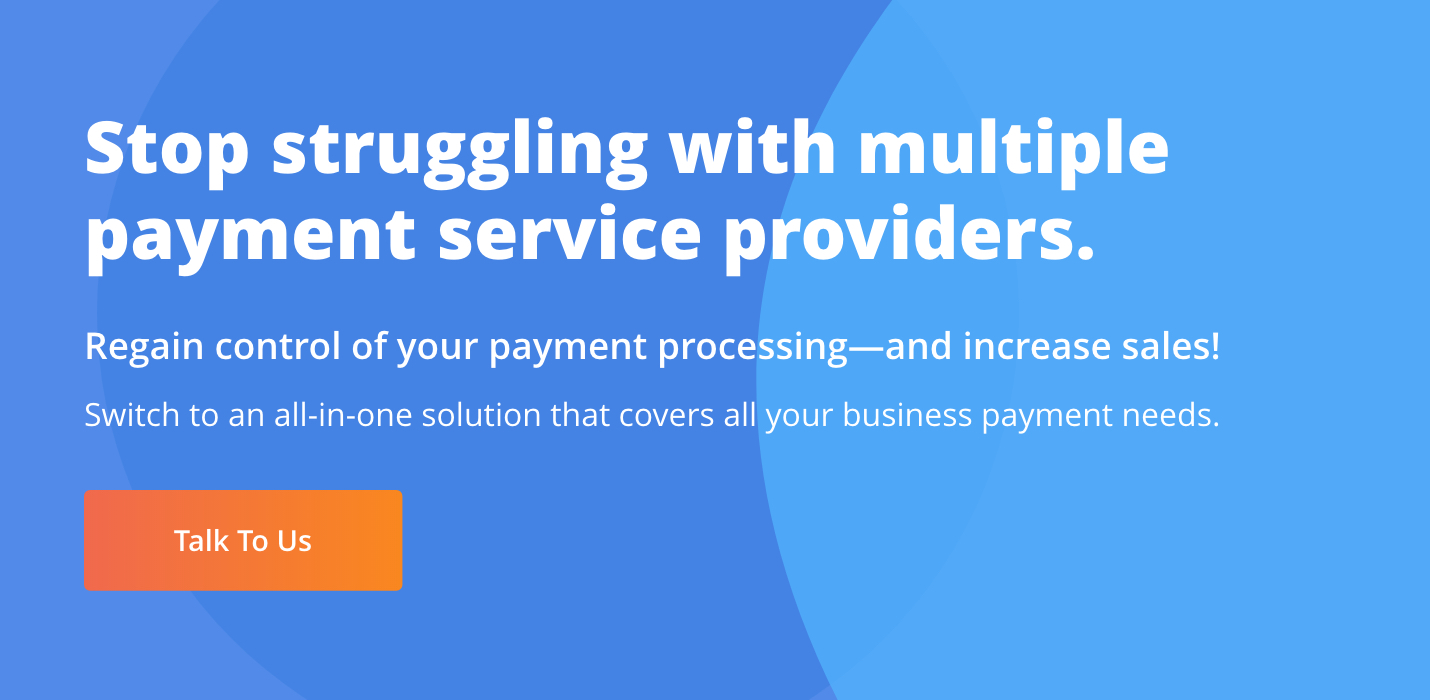Accepting and processing cross-border orders is a key aspect of eCommerce growth. However, the past 18 months of increasing card processing fees has disproportionately impacted businesses that sell goods internationally. These additional fees, which can add up to 1%, eat into profits and reduce a business’s return on investing in cross-border sales. On top of that, many companies aren’t aware of other related fees that are also costing them and impacting their bottom line.
But with the right partners and tools, businesses could find that some of these fees are avoidable.
What You Should Know About Cross-Border Interchange Fees
Over the last year and a half, card processing networks have increased cross-border interchange fees — fees calculated on top of the regular interchange fees that are part of any card purchase. With the growth of cross-border eCommerce outpacing domestic online retail by 2X, the card networks have identified an opportunity. While many countries are putting hard caps on their own card processing fees, there is no governing body advocating for cross-border merchants. Additionally, banks take on a higher risk of fraud when processing cross-border sales, so increasing rates for cross-border transactions makes a lot of sense for banks. Although for online businesses, their profits are at stake.
Consider the real price of up to a 1% increase in fees for an online retailer: If an eCommerce store sells $200 million worth of goods and 25% of its sales are considered cross-border, then $50 million of that revenue is subject to the cross-border interchange fee, meaning they are paying, on average, up to $500,000 in fees that could be avoided.
You should also understand that it is the card networks themselves that define what is and is not cross-border. For example, a French shopper purchasing with a Visa card from a US online retailer is considered cross-border, but that same shopper purchasing from an Italian online retailer would not be considered cross-border. For the purposes of card payments, Visa considers Italy and France to be in the same region.
A Better Way: Minimize These Fees with BlueSnap
ECommerce sellers can try to avoid cross-border fees by connecting with local banks so they can route each credit card transaction to a bank in the same region as where the card was issued. To process a transaction locally, businesses need to have a legal entity in that region. The more online global business a website does, the more connections to local banks they need. On average, international businesses use five different payment gateways to route cross-border transactions to local banks. However, the costs of developing and maintaining those connections along with integrating additional services, such as various payment types, like eWallets, and fraud prevention, can offset the savings of processing payments locally. Choosing a payments provider with connections to local banks and other powerful features like fraud, eWallets and more can save businesses time and money.
With a network of 30 worldwide banks, BlueSnap is one of the only payment processors that can automatically route cross-border transactions to a local acquiring bank following card network rules. Our smart technology considers key transaction attributes, including card type, where it was issued, the currency, and the amount. Based on that information, we then employ our proprietary Intelligent Payment Routing, which routes the transaction to a bank that will regard it as a local transaction, effectively allowing us to localize almost any payment and increase conversions.
Avoid Other Transaction Fees & Improve Authorization Rates
Cross-border interchange fees are not the only avoidable costs BlueSnap can help with. Online businesses might also see foreign exchange fees when customers pay in one currency but then the banks pay you out in another.
For example, if a French customer shops on your US website and makes a purchase in US dollars with his Visa card from a French bank, he will have to pay a foreign exchange fee, and over time, this will turn away international shoppers from your site. If you choose to mitigate this by allowing customers to pay in their local currencies, then the bank will charge you a fee to convert the money to your domestic currency. These foreign exchange fees add an additional 1%, on average, which, using the example earlier in the piece would be another $500,000.
Again, BlueSnap can help. We accept 100 shopper currencies, so your customers don’t need to pay foreign exchange fees. We also settle payments in 16 different currencies, which is useful to keep the funds in the local currency and avoid exchange fees if you operate your business in multiple countries or run an online marketplace with merchants dispersed around the world.
Cross-border selling can also lead to low authorization rates based on banks’ familiarity with the cards used. For example, a French bank is likely to authorize a transaction made with a card issued in France but is less likely to authorize a card issued in the United States. Why? Because the bank perceives a higher probability of fraud, and therefore a higher level of financial risk.
When BlueSnap routes a transaction, we identify where the card is from and then route it to a local bank in accordance to card rules, increasing the authorization rate by 3% to 6%.
Continuing the example, a business with $50 million in cross-border transactions could see authorization rates increase by 5%, generating $2.5 million in incremental revenue.
Cross-border payments have a number of associated fees. It’s imperative that online businesses have a good understanding of the impact these fees have on their business, as well as a solid grasp on how to minimize them as they expand their online business in the global market.


